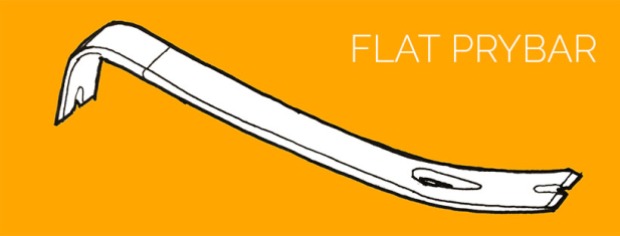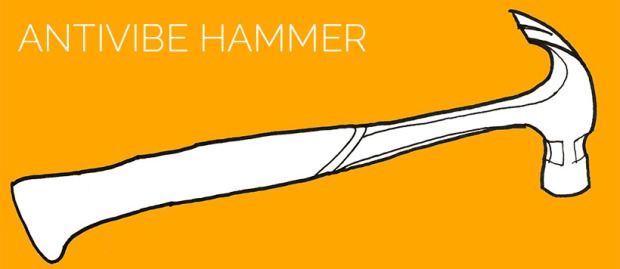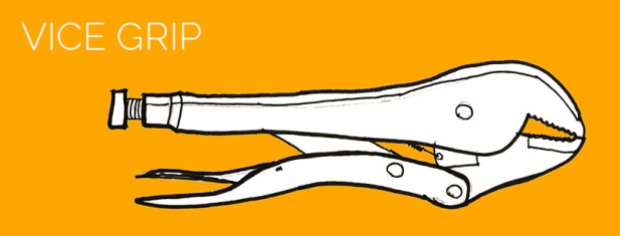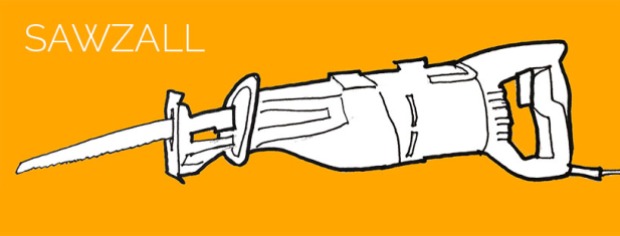Even if you plan to hire contractors to do your remodeling work, you can save money and feel a sense of ownership for the project by chipping in labor during demolition. With a few of the right tools (and some common sense) removing an out of date “finished” basement before replacing it with a new one is a task most homeowners can tackle with success.

Flat Prybar: The overwhelming majority of my demo work in the basement involved a flat prybar (aka “Wonderbar” if you own the Stanley version). My dad brought two to the project when we started de-construction and, after numerous tiffs between him, my mom, and I, over who had access to them on group work days, we went out and bought a third (and longer) one. Note: Different sizes really help get different jobs done.
I love this tool, which seems to have a design almost magically able to get leverage in any situation for removing anything from finish trim to knotty pine siding, popping the nails from old drywall and breaking it off in handy large sheets, pulling apart 2x framing and then pulling out all the extra nails. As Archimedes said, “Give me a lever long enough and a fulcrum on which to place it, and I shall move the world.” For a women doing demolition, that leverage is a literal godsend!

Anti-vibe Hammer: The close runner up tool is a simple framing hammer – I like a 16 ounce Anti-Vibe model that is pretty easy to handle and doesn’t absolutely kill my wrist when I spend an afternoon hammering old nails back out of dimensional lumber. It also helps the prybar out – when you line up one of the chisel-like ends up with two boards you want to separate and give them several good whacks. Actually “several good whacks” is a very common action in demolition.

Vice grip: This sub-species of plyers is SUPER HANDY for prying out nails without heads. The little screw attachment on the end allows you to adjust how open the space between the two pinch plates is. When you set it to just-narrower-than-the-thing-you’re-prying, then squeeze to lock it down it hangs on tight.
As the name implies it also makes a handy grip for any small awkward thing you want to pry or just hang on to.

Box Cutter: The cutter comes in handy for scoring and snapping bits of old drywall, for slicing away tar paper and for separating painted-together wood pieces. This one is probably a must-have for just about any kind of construction work.
Voltage Meter: Before you go screwing around with any wall that has a light switch, outlet or fixture mounted on it, TURN OFF THE BREAKER. But since older houses often have confusing or mislabeled wiring, you can’t necessarily trust the the labels on the breaker box. Be sure to test any wiring you mess with to make sure its off before you start to dis-assemble.
Honorable Mention:
The right “outfit:” I couldn’t list the requisite tools of demo without mentioning my protective gear. Kneepads to keep my patellas up off the concrete floor, a succession of respirator masks to keep the dust out of my lungs and a strong but flexible pair of work gloves are all accessories I depend on. I pair them with ratty jeans and a too-large goodwill button down shirt that protects my arms and whatever else I have on. Demolition is a messy process so designating a work outfit that gets quarantined from other clothes is a great way protect the things I like to wear in public.
The Setup to Cleanup: I use a combination of a beat up old push broom and a little sweeper that directs piles into the dust pan. Cleaning up the debris at the end of every day is hard to find energy for but makes starting again so much easier. I’ll admit there were days when I just gave up and left the mess behind the basement door but in general I couldn’t go a day without my cleanup tools. Be sure to invest in contractor grade trash bags. Some of the debris you’ll be collecting is HEAVY and you don’t want to risk a rip just as you pass through the Not-Under-Construction portion of your house.
Plus: A few Really Handy Power Tools You might also want to Borrow or Buy

Sawzall: The reciprocating saw or sawzall is not something I used regularly in the basement – its more a weapon of last resort. When you can’t get an angle on something, when the nails go in too deep, this little saw can cut you free. It’s also extremely handy for salvaging a door and the attendant casing intact – just cut all the nails away from the rough framing.
Circular Saw: If you only want to take out half a wall – or cut a door opening wider – without removing and damaging all the drywall, this guy is your friend. Screw in some guide boards and run a neat and tidy cut between the parts you want to remove and preserve!
Power Drill: This comes in handy if you have drywall screws to pull. There will be many and taking them out by hand is possible but annoying. Save your minutes and zip them out with a power update.
